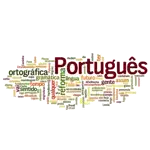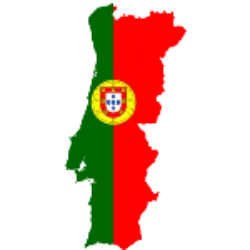New Words and Their Impacts

Neologisms are new words or expressions that appear in a language, either to name concepts, objects or phenomena that did not previously exist. They can arise due to the need for cultural adaptation, technological changes or even social innovations. The use of neologisms reflects the dynamics and evolution of languages.
There are two main types of neologism: formal or lexical, which refers to the creation of a new word, such as "selfie" (a photo taken of oneself), and conceptual or semantic, which occurs when an existing word takes on a new meaning, such as "mouse", which was previously just "rato" and now also refers to a computer device.
It is important to highlight the difference between neologism and loanword. While a neologism is a new word or a new use of an existing word in the language, loanword refers to the borrowing of words from other languages, such as "marketing" or "web". Loanisms are not original creations of the language, but rather adaptations of foreign words that still preserve their original form.
These linguistic processes demonstrate how language is constantly changing, reflecting society and the changes that accompany it.
The etymology of words

Etymology is the study of the origin and evolution of words over time. In Portuguese, many words have roots in Latin, since the language emerged from the Vulgar Latin spoken by the Romans. However, there are also influences from Arabic, Tupi, African and other European languages, making the Portuguese vocabulary extremely rich and diverse.
A curious example is the word "cachorro", which today means a dog, but originally referred to the offspring of any animal. It comes from the Latin catulus, while the correct word for "cão" was canis, which gave rise to the term "canino". "relógio" (clock) comes from the Latin horologium, derived from hora, indicating something related to time.
Arabic also left its mark on the language, especially during the Moorish occupation of the Iberian Peninsula. Words such as "algodão" (al-qutun) and "azeite" (az-zayt) come from this influence. Tupi, an indigenous language, brought terms such as "abacaxi", "pipoca" and "capivara", while African languages contributed words such as "cafuné" and "fubá".
Studying etymology reveals not only the evolution of the language, but also the history of the peoples and cultures that influenced Portuguese. With each word we speak, we carry a bit of the trajectory and changes that shaped the language over the centuries.
Test yourself with one of these challenges 👇
Discover some interesting facts about Portuguese Language
Linguistic variation in Brazil

The Portuguese language in Brazil is marked by enormous diversity, reflecting the cultural and historical influences of each region. This linguistic variation occurs due to factors such as colonization, immigration, contact with indigenous and African languages, in addition to the geographic particularities of each location. Thus, the Portuguese spoken in the country has distinct accents, expressions and even vocabulary in different states.
Northeastern Portuguese, for example, has characteristic phonetic features, such as the more open pronunciation of vowels and the presence of typical expressions such as “oxente” and “arretado”. Carioca Portuguese is known for the hissing sound when pronouncing the "s" and the frequent use of slang such as "maneiro" and "bolado". In São Paulo Portuguese, the stronger "r" at the end of words is a striking feature, as are expressions such as “meu” and “beleza” in everyday vocabulary.
In the South, the influence of European immigrants caused Gaucho Portuguese to incorporate different words and accents, such as the use of “guria” for girl and “bah” as an interjection. In the North, there is a strong impact of indigenous languages, resulting in expressions such as “tacacá” and “bicho” to refer to someone.
These variations enrich the Portuguese language, making it dynamic and representative of Brazil's cultural diversity.
Since the 3rd century BC

Since the 3rd century BC, the Portuguese language has evolved from Vulgar Latin brought by Roman settlers, with minor influences from other languages and a marked Celtic substrate. With the fall of the Roman Empire and the Germanic invasions, archaic Portuguese developed in the 5th century AD. and it became a language of written documents since the 9th century, giving rise to Galician-Portuguese. This language matured in the 13th century and was made official by D.Dinis I in 1290. The leap to modern Portuguese took place during the Renaissance, with the landmark Cancioneiro Geral by Garcia de Resende, in 1516. it began with the creation of grammars in 1536. With the expansion of the Age of Discovery, the Portuguese language became international. In 1990, the Orthographic Agreement of the Portuguese Language was signed, signed by representatives of Angola, Brazil, Cape Verde, Guinea-Bissau, Mozambique, Portugal and São Tomé and Príncipe, aiming to create a unified orthography.
Periphrasis

Periphrasis is a figure of speech that consists of expressing an idea or concept through an indirect description or a circumlocution, instead of using the corresponding specific term. It is a way of expanding or enriching the expression, giving it greater expressiveness or a more elaborate character. In periphrasis, instead of using a direct and objective word to refer to something, other words or a more elaborate description are used to convey the same meaning. This can occur through word combinations, comparisons, allusions or even the use of metaphors. A common example of periphrasis is the expression "rainha dos mares" to refer to the mythological figure of the mermaid. In this case, instead of using the term "sereia"; directly, a poetic and evocative description is used.
The Predicate is the term of the sentence that expresses the action

The Predicate is the term of the sentence that expresses the action, state or quality attributed to the subject. It can be verbal, nominal or verb-nominal, depending on the sentence structure. Understanding the predicate is essential for proper grammatical analysis and complete understanding of the transmitted message. Examples: "Ele comprou um livro."; In this sentence, the verb "comprou"; is the core of the verbal predicate, expressing the action of buying. / "A menina está feliz."; In this sentence, the linking verb "está"; joins the subject "a menina"; to the predicative of the subject "feliz";, expressing the state of happiness. / "O time ganhou o jogo e ficou eufórico."; In this sentence, the verb "ganhou"; expresses the action of winning the game, while the predicative of the subject "eufórico"; attributes a state to the subject "o time";.
What they are and how to use them in everyday life

Idiomatic expressions are combinations of words whose meaning goes beyond the literal translation of the words that compose them. They are common in many languages and have the power to enrich communication, making it more colorful and expressive. These expressions reflect the culture and historical context of a society.
Among the best-known examples are "dar com os burros n’água", which means to fail, and "pôr a mão na massa", which means to work directly on something. Idiomatic expressions are used to convey ideas more effectively and creatively, and are widely used in informal conversations and also in literary texts.
They serve to create deeper connections between speakers, adding contextual meaning. To use them correctly, it is important to understand their meaning and the context in which they are appropriate. Using them incorrectly can lead to confusion.
Interestingly, some idiomatic expressions have different versions in different languages, which can lead to misunderstandings when translated literally. Therefore, knowing these expressions is essential for more fluent and understandable communication.
Test yourself with one of these challenges 👇
HOME














